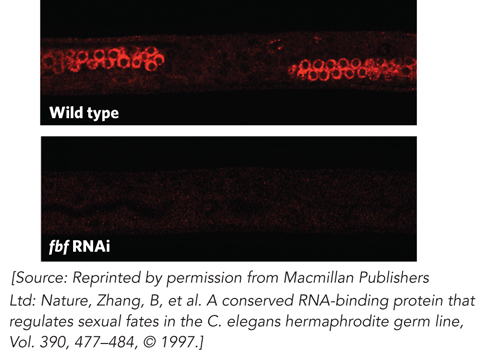DATA ANALYSIS PROBLEM
Zhang, B., M. Gallegos, A. Puoti, E. Durkin, S. Fields, J. Kimble, and M.P. Wickens. 1997. A conserved RNA-
798
Question 22.13
The collaborative effort by Judith Kimble, Marvin Wickens, and colleagues, as described in their 1997 paper, resulted in discovery of the FBF proteins that bind the 3′UTR of the mRNA from the fem-
How was the three-
hybrid method modified in the Kimble and Wickens study?
Six different RNA sequences were screened for FBF-
Of these controls, which would make the best case for specific binding of the PME by FBF-
1? Why might the other controls be useful?
The investigators used immunofluorescence to detect expression of the FBF-
What conclusion can you draw from the protein expression pattern in the upper panel of the figure?
The lower panel in Figure 1 shows results for an animal treated with RNAi directed at the gene for FBF-
Given the function of FBF-
1 in the germ line, what is the likely effect of this RNAi treatment on the germ line of the treated animals?
